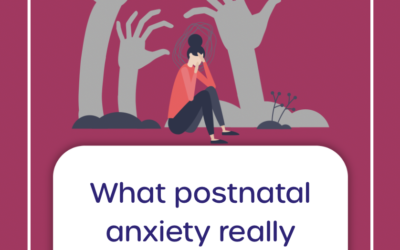If your child struggles to fall asleep, cries when you leave the room, or becomes clingy at bedtime, you are not alone. Many parents assume these behaviours are “bad habits” or “testing boundaries.” In reality, they are often linked to how a child’s sensory system and attachment needs work together. They may be struggling with sensory seeking or sensory avoiding issues.

Bedtime can be one of the hardest times of the day for little ones. Their bodies are tired, their brains are full, and the world suddenly feels quiet and dark. For some children, that stillness feels safe. For others, it feels overwhelming. Understanding whether your child is sensory-seeking or sensory-avoiding can completely transform bedtime from a battle into a moment of calm connection.
What Is the Sensory System?
Your child’s sensory system constantly gathers information from the world around them. Through touch, sound, smell, light, taste, movement, and body awareness, their brain decides whether they feel safe, calm, or alert.
When the senses are in balance, your child can relax and prepare for sleep. But if one or more senses feel too intense or not intense enough, the nervous system reacts with stress signals. These can look like hyperactivity, restlessness, clinginess, or tears.
Sensory Seeking vs Sensory Avoiding
Children process sensory information in their own unique way. Some crave more sensory input to feel grounded, while others need less to feel safe.
Sensory-Seeking Children
Sensory-seeking children are the ones who seem to need constant movement, pressure, or sound. You might notice that your child:
- Jumps, wriggles, or rolls around before bed
- Crashes into furniture or pillows
- Loves deep hugs or being wrapped tightly in a blanket
- Makes noises or taps repetitively
- Struggles to lie still when it’s time to rest
For these children, bedtime can feel too quiet or too still. Their body is looking for ways to release energy and feel their own boundaries. Helping them meet that need for input can make sleep come far more easily.
Sensory-Avoiding Children
Sensory-avoiding children are more sensitive to stimulation. They may find bright lights, strong smells, certain textures, or sudden sounds overwhelming. Common signs include:
- Covering ears or hiding under the duvet
- Complaining about pyjamas or seams
- Crying during toothbrushing or hair-brushing
- Struggling with transitions between playtime and bedtime
- Asking for the same predictable routine every night
For these children, too much sensory input feels threatening. The goal is to make bedtime as calm, predictable, and low-stimulus as possible.
Why Bedtime Is Especially Difficult
Evenings naturally challenge the sensory and emotional systems. The house gets quieter, lights dim, and routines change. For a tired child whose brain is already processing a day’s worth of information, this can feel like sensory overload.
Add in separation anxiety– the fear of being away from their parent and the brain goes into survival mode. When the nervous system senses potential threat, it produces cortisol and adrenaline, making it almost impossible for a child to relax.
By recognising what your child’s body is trying to tell you, you can make small, simple adjustments that send the message: “You are safe, and sleep is coming.”
How to Support Sensory-Seeking Children at Bedtime
- Movement before rest – Allow some active play or gentle stretching before bed. Activities like crawling, pushing a basket, or doing animal walks can release energy.
- Deep pressure – Offer firm cuddles, gentle massage, or a “pillow squish” game. Weighted toys or blankets can also help their body feel grounded.
- Warmth and rhythm – Try a warm bath, rhythmic music, or a slow, predictable bedtime story. Repetition calms the nervous system.
- Consistent cues – Use the same bedtime phrase or song each night. Predictability builds safety.
Remember: these children are not “bouncing off the walls” to be naughty. Their body is searching for sensory balance. Meeting that need proactively helps them settle far more quickly.
How to Support Sensory-Avoiding Children at Bedtime
- Create a low-stimulation environment – Use soft lighting, calm music, and limit background noise. Avoid bright overhead lights and sudden transitions.
- Mind the textures – Choose smooth, tag-free pyjamas and soft bedding. Avoid strong scents from soaps or washing powder.
- Simplify the routine – Use a simple visual chart or picture book to show what happens next: bath, pyjamas, story, lights out.
- Offer gentle control – Let your child choose their pyjamas or nightlight colour. A sense of choice reduces anxiety.
- Stay calm and consistent – Your predictability is the anchor that helps their body relax.
The aim is not to remove every sensation, but to keep the environment comfortably familiar and predictable.
Sensory Mapping: A Simple Tool for Parents
Try observing your child’s responses to touch, sound, light, movement, and smell over a few nights.
Write down what calms them and what seems to trigger resistance.
You might find that your child loves soft music but hates bright lights, or that they settle better after carrying something heavy before bed. This kind of sensory detective work helps you shape a routine that works with their body instead of against it.
What About Separation Anxiety?
Separation anxiety is developmentally normal and deeply connected to sensory regulation. When a child feels safe in their body, they feel safer in their relationship with you.
Create a simple goodbye or bedtime ritual that always ends the same way.
A short hug, a phrase like “See you in the morning when the sun is up,” and a gentle wave can make the transition predictable.
Avoid sneaking away — visible, confident goodbyes build trust far faster than disappearing does.
How Parents Can Stay Calm Too
Children borrow their parents’ calm. When you slow your breathing, lower your tone, and stay steady, your child’s body mirrors that regulation.
Before bedtime or drop-off, take a moment for yourself:
- Breathe out longer than you breathe in.
- Relax your shoulders.
- Remind yourself: “My calm is their anchor.”
When you model regulation, you teach it without words.
Gentle Tools to Help You
If you want to go deeper into understanding your child’s sensory needs and create calmer routines, I’ve created two easy-to-use resources:
🌙 Mini Sensory + Separation Anxiety Toolkit (£5) – A quick-start guide with sensory mapping worksheets, environment checklists, and bedtime tips.
🌈 Full Sensory + Separation Anxiety Toolkit (£15) – A comprehensive workbook with printable calm cards, goodbye charts, reflection pages, and step-by-step plans for both sensory seekers and avoiders.
Each guide is evidence-based, parent-friendly, and written from my 28 years of experience as a Health Visitor, Children’s Nurse, and Gentle Sleep Coach.
You can find both toolkits here
Final Thoughts
There is no one “right” bedtime routine because every child’s sensory system is unique. When you start to notice what your child’s body is communicating, bedtime becomes less about enforcing rules and more about meeting needs.
Small changes like dimming the lights, adjusting textures, or offering deep pressure can transform the atmosphere completely.
The next time bedtime feels like a struggle, take a breath and remind yourself:
Your calm is the anchor your child borrows until they can find their own.




0 Comments